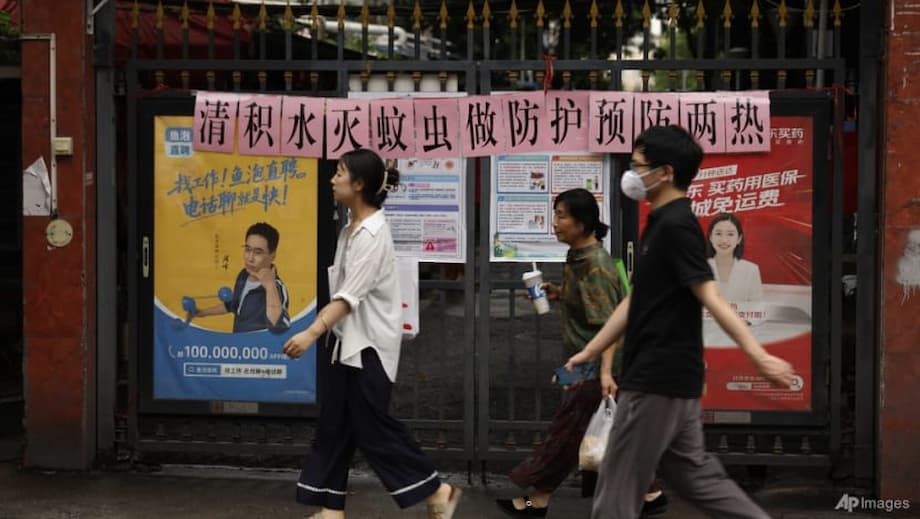China’s Chikungunya Outbreak: A New Public Health Challenge
In the summer of 2025, southern China found itself at the epicenter of a major public health crisis as the chikungunya virus swept through Guangdong province. With over 8,000 reported cases in just a month—primarily in the manufacturing hub of Foshan—Chinese authorities launched a sweeping response reminiscent of the country’s COVID-19 pandemic controls. The outbreak, the largest ever recorded in mainland China, has raised questions about the balance between aggressive disease containment and civil liberties, as well as the evolving risks posed by mosquito-borne illnesses in a warming world.
- China’s Chikungunya Outbreak: A New Public Health Challenge
- What Is Chikungunya and Why Did It Spread in China?
- China’s Response: COVID-19 Tactics for a Mosquito-Borne Virus
- Public Reaction: Between Compliance and Concern
- Expert Analysis: Was the Response Justified?
- Global Implications: Travel Warnings and the Role of Climate Change
- Prevention and Treatment: What Can Individuals Do?
- Lessons Learned: Balancing Public Health and Civil Liberties
- In Summary
What Is Chikungunya and Why Did It Spread in China?
Chikungunya is a viral disease transmitted to humans by the bites of infected Aedes mosquitoes, primarily Aedes aegypti and Aedes albopictus. The virus was first identified in Tanzania in 1952, and its name comes from the Kimakonde language, meaning “that which bends up”—a reference to the contorted posture of sufferers experiencing severe joint pain. Symptoms typically appear three to seven days after a mosquito bite and include high fever, intense joint pain, headache, muscle pain, rash, and fatigue. While most people recover within a week, joint pain can persist for months or even years in some cases. Severe complications and deaths are rare, usually affecting newborns, the elderly, or those with underlying health conditions.
Chikungunya is not spread directly from person to person; instead, an infected person can transmit the virus to mosquitoes for about a week after becoming ill. These mosquitoes then bite others, continuing the cycle. The outbreak in China began with an imported case in Foshan on July 8, 2025, and quickly escalated due to a lack of population immunity, heavy rainfall, and high temperatures—conditions ideal for mosquito breeding. Experts point to climate change and urban expansion as key factors increasing the risk and frequency of such outbreaks worldwide.
China’s Response: COVID-19 Tactics for a Mosquito-Borne Virus
Drawing on strategies honed during the COVID-19 pandemic, Chinese authorities initiated a multi-pronged campaign to halt the spread of chikungunya. The measures included:
- Quarantine and Hospitalization: Infected individuals were quarantined in hospital wards, often behind mosquito nets and screens, until they tested negative or had stayed for at least a week. This was despite chikungunya not being contagious between humans.
- Mass Mosquito Control: Soldiers and workers sprayed parks, streets, and residential areas with insecticide. Drones equipped with AI-powered sensors scoured neighborhoods for stagnant water—prime mosquito breeding sites—while community workers inspected homes and ordered residents to remove any standing water.
- Biological Interventions: Authorities released thousands of mosquito-eating fish into city ponds and introduced lab-bred “elephant mosquitoes”—a species that does not bite humans but preys on the larvae of virus-carrying mosquitoes.
- Legal and Social Enforcement: Non-compliance with mosquito control orders could result in fines up to 10,000 yuan (about $1,400 USD), electricity cut-offs, or even criminal charges. Pharmacies tracked purchases of fever and pain medications, raising privacy concerns.
- Patriotic Health Campaigns: Residents were urged to participate in a “patriotic health campaign,” cleaning their homes and workplaces daily to eliminate mosquito breeding sites. Skyscrapers displayed public health messages, and government employees were required to check for standing water before leaving work.
These tactics, while effective in mobilizing the population, sparked memories of the zero-COVID era. Some residents reported forced entry by officials or landlords, destruction of plants suspected of harboring water, and intrusive health checks. In one widely reported incident, community workers forcibly took a blood sample from a child with a fever after parents initially refused, prompting public complaints about overreach.
Innovative Technologies: Drones, AI, and Lab-Grown Mosquitoes
China’s response also showcased cutting-edge technologies. Drones with AI-powered sensors enabled rapid identification of mosquito hotspots, allowing for targeted interventions. The use of lab-bred “elephant mosquitoes” represented a novel biological control method: these mosquitoes do not bite humans but consume the larvae of Aedes mosquitoes, helping to reduce the population of virus carriers. Such innovations may serve as a model for future outbreaks of mosquito-borne diseases globally.
Public Reaction: Between Compliance and Concern
The aggressive measures drew mixed reactions from the public. Some residents accepted the strict controls as necessary, especially after experiencing infection themselves. Others voiced concerns about privacy, forced entry, and the return of pandemic-era surveillance. Social media buzzed with comparisons to COVID-19, with some users expressing anxiety over the prospect of renewed lockdowns and mass quarantines.
However, the response to chikungunya was notably less severe than during the pandemic. There were no citywide lockdowns, and most people were not subject to strict quarantine unless infected. Community workers focused on auxiliary measures—spraying insecticide, distributing repellents, and registering residents—rather than enforcing widespread isolation.
Some experts and residents questioned the proportionality of the response, given chikungunya’s low mortality rate and the absence of human-to-human transmission. They argued for more targeted, less coercive approaches, such as community education and environmental management, rather than mass mobilization and legal penalties.
Expert Analysis: Was the Response Justified?
Public health experts are divided on the necessity and effectiveness of China’s COVID-style response to chikungunya. On one hand, the lack of a widely available vaccine in China and the rapid spread of the virus justified aggressive containment efforts, especially in a densely populated region with no prior immunity. On the other hand, some specialists argue that mass mobilization and intrusive measures may be disproportionate for a disease that is rarely fatal and not directly contagious between people.
Dr. César López-Camacho of the University of Oxford noted that the outbreak’s scale was unprecedented in China, but not globally, as larger epidemics have occurred elsewhere. He emphasized the importance of vector control, surveillance, and public education, especially as climate change expands the range of Aedes mosquitoes. The World Health Organization and U.S. Centers for Disease Control and Prevention (CDC) both recommend prevention through repellents, protective clothing, and eliminating mosquito breeding sites, rather than mass quarantines.
“The outbreak in China is a reminder of the importance of preparedness for mosquito-borne diseases,” said a spokesperson for the Science Media Centre. “Ongoing surveillance, vaccine access, and vector control are essential as climate change and urbanization increase risks.”
China’s National Health Commission, led by Deputy Director Shen Hongbing, emphasized the need for rapid containment, enhanced sanitation, and public mobilization. The government’s comprehensive mosquito-borne virus governance system, including real-time risk warnings and community participation, was highlighted as a potential template for other developing countries facing similar challenges.
Global Implications: Travel Warnings and the Role of Climate Change
The outbreak in Guangdong has drawn international attention. The U.S. CDC issued a Level 2 travel advisory, urging travelers to practice enhanced precautions and consider vaccination if visiting affected areas. Canada and other countries updated their travel advisories, and Hong Kong and Macao reported their first cases linked to travel or local transmission.
Experts warn that the risks of chikungunya and other mosquito-borne diseases are rising globally due to climate change, which creates warmer and wetter environments ideal for mosquito breeding. Urban expansion and increased international travel further facilitate the spread of these viruses. In 2025 alone, over 240,000 chikungunya cases were reported worldwide, with the highest numbers in Brazil, Bolivia, Argentina, and Peru.
While the risk of a global pandemic remains low—since transmission requires the presence of the appropriate mosquito species—the outbreak underscores the need for vigilance and preparedness. The expansion of Aedes mosquitoes into new regions, including parts of Europe and North America, means that previously unaffected populations may face similar challenges in the future.
Prevention and Treatment: What Can Individuals Do?
There is no specific antiviral treatment for chikungunya. Management focuses on relieving symptoms through rest, fluids, and over-the-counter pain medications such as acetaminophen. Aspirin and other non-steroidal anti-inflammatory drugs should be avoided until dengue fever is ruled out, as they can increase the risk of bleeding. Most patients recover fully, but some may experience prolonged joint pain or, in rare cases, complications affecting the eyes, heart, or nervous system.
Prevention remains the most effective strategy. The World Health Organization and CDC recommend:
- Using insect repellent containing DEET, picaridin, or IR3535
- Wearing long-sleeved shirts and long pants
- Staying in screened or air-conditioned accommodations
- Eliminating standing water in and around homes to prevent mosquito breeding
- Using mosquito nets, especially for infants, the elderly, and those with chronic illnesses
Two vaccines—IXCHIQ and VIMKUNYA—are approved in the U.S., Canada, and parts of Europe, primarily for travelers and high-risk groups. However, these vaccines are not yet widely available in China or many of the countries most affected by chikungunya.
Lessons Learned: Balancing Public Health and Civil Liberties
China’s response to the chikungunya outbreak demonstrates both the strengths and challenges of rapid, centralized public health mobilization. The aggressive measures likely contributed to the plateauing of new cases, but also revived debates about privacy, proportionality, and the sustainability of mass mobilization for diseases with low mortality. The use of drones, AI, and biological controls highlights the potential of innovative technologies in epidemic management, while the experience underscores the importance of community engagement and transparent communication.
As climate change and urbanization continue to reshape the landscape of infectious diseases, China’s chikungunya outbreak offers a case study in the complexities of modern public health—where old playbooks meet new threats, and the line between necessary intervention and overreach is constantly being negotiated.
In Summary
- China’s Guangdong province experienced its largest-ever chikungunya outbreak in 2025, with over 8,000 cases reported in a month.
- Authorities responded with aggressive measures reminiscent of COVID-19 controls, including quarantine, mass mosquito control, and legal enforcement.
- Innovative technologies such as drones, AI, and lab-bred mosquitoes were deployed to identify and reduce mosquito breeding sites.
- The response sparked mixed reactions, with some residents accepting the measures and others raising concerns about privacy and proportionality.
- Experts emphasize the importance of vector control, surveillance, and community education, especially as climate change increases the risk of mosquito-borne diseases.
- Prevention—through repellents, protective clothing, and eliminating standing water—remains the best defense, as no specific antiviral treatment exists.
- The outbreak highlights the need for global preparedness, innovative public health strategies, and careful balancing of public health and civil liberties.












